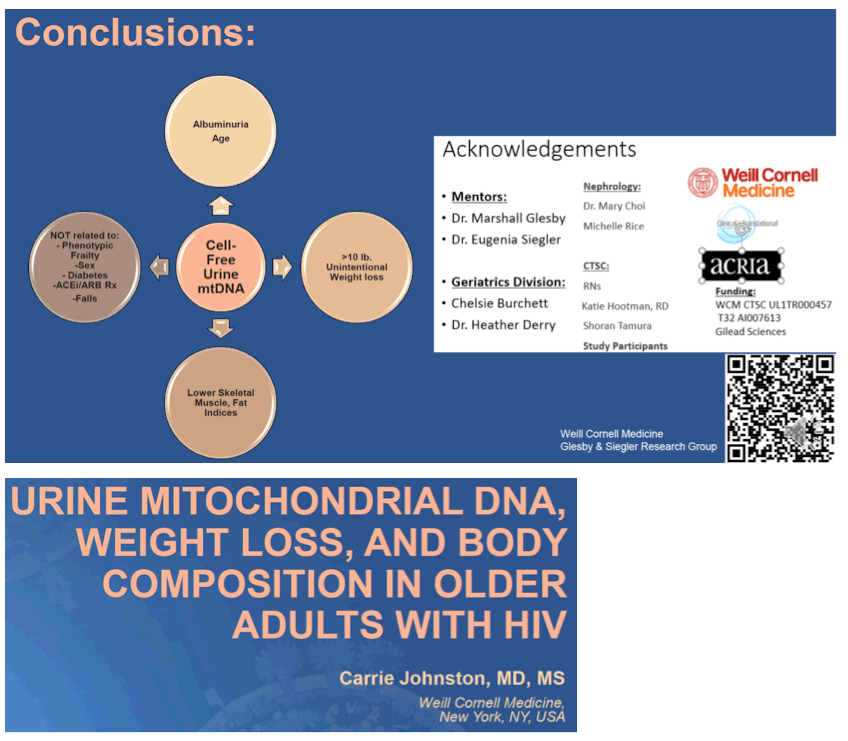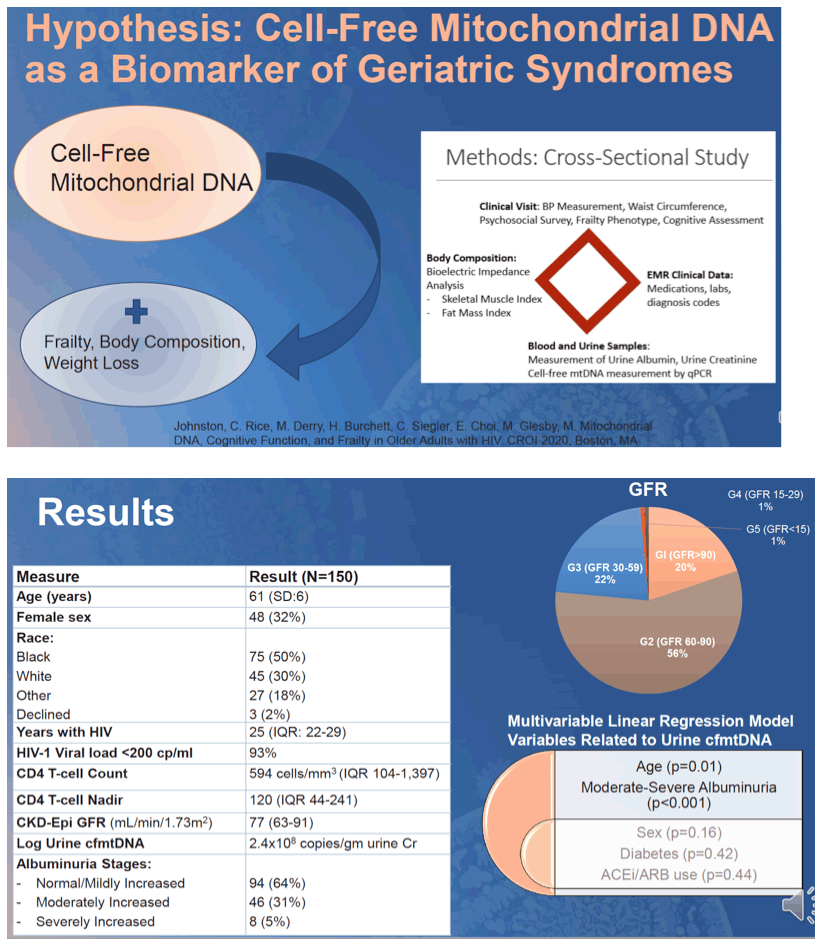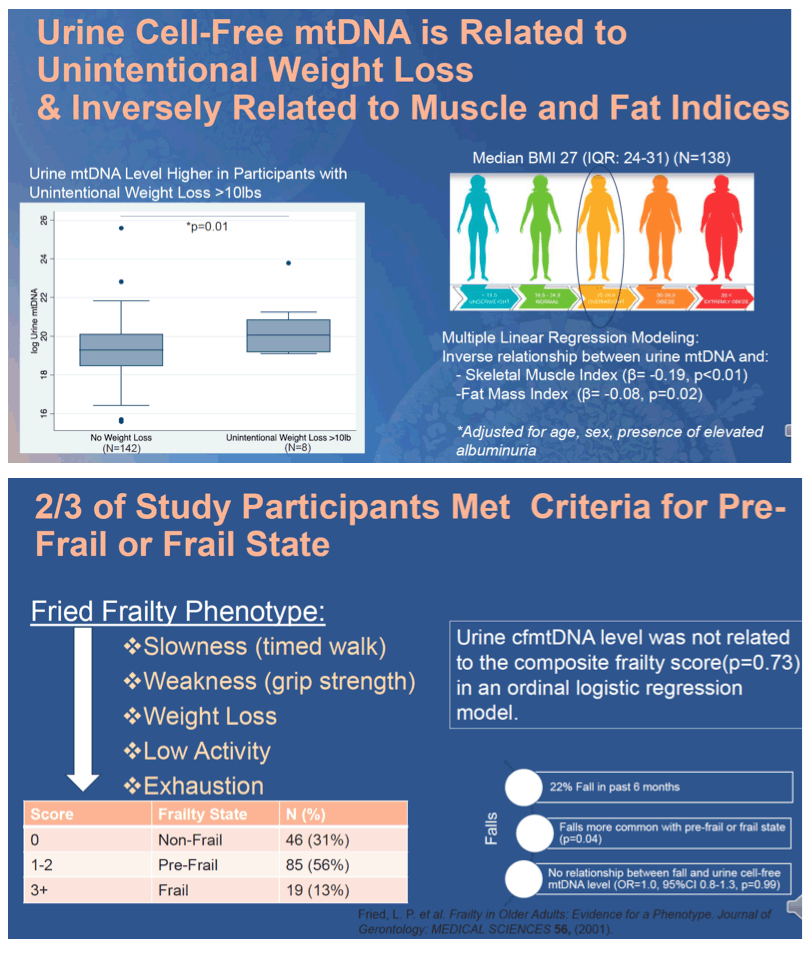 |
 |
 |
| |
URINE MITOCHONDRIAL DNA, WEIGHT LOSS, AND BODY COMPOSITION IN OLDER ADULTS WITH HIV
|
| |
| |
CROI 2021 March 6-10 Reported by Jules Levin
Carrie Johnston1, Eugenia Siegler1, Michelle Rice1, Heather Derry1, Katie Hootman1, Yuan-Shan Zhu1, Chelsie Burchett1, Mary Choi1, Marshall J. Glesby1 1Weill Cornell Medicine, New York, NY, USA
Background: Mitochondrial DNA released from cells undergoing stress and necrosis-mediated cell death has the potential to act both as mediator and marker of inflammatory dysregulation, and to serve as a biomarker in the blood and urine. We hypothesized that urine cell-free mitochondrial DNA (cfmtDNA) would be associated with geriatric syndromes in older adults with HIV (OAH).
Methods: This is a cross sectional analysis of OAH (age 55 and over) who had frailty testing (Fried Frailty phenotype), bioelectric impedance analysis (BIA), and measurement of urine cfmtDNA by quantitative PCR. Skeletal muscle and fat mass indices were calculated using BIA results.
Results: Of 164 participants, there were 109 (66%) males, the mean age was 61 years (SD 6), 82 (52%) identified as Black, and 93% had HIV-1 viral load <200 copies/ml. Urine cfmtDNA was measured in 150 participants who had urine available for analysis. The geometric mean cfmtDNA level in urine was 2.4x108 copies/gram of urine creatinine [95%CI: 2.0x108-3.1x108]. Two thirds (67%) met criteria for a pre-frail or frail state. Mean urine cfmtDNA level was higher in participants who met frailty criteria for unintentional weight loss (p=0.01) by t-test [Figure 1]. Other frailty components including slow walk, weak grip, exhaustion and low physical activity did not have statistically significant differences in mean urine mtDNA level (p-values > 0.31). In a multivariable linear regression model both microalbuminuria (p<0.001) and age (p = 0.01) were associated with higher urine cfmtDNA values, whereas sex, diabetes, and use of angiotensin I converting enzyme inhibitor (ACEi) or angiotensin receptor blocker (ARB) medications did not have statistically significant relationships with urine mtDNA levels (p=0.16, p=0.42, p=0.44, respectively). In a sample subset with body composition data (n=138), median body mass index was in the overweight range (median=27kg/m2, IQR 24-31). In separate multiple linear regression models adjusted for age, sex and microalbuminuria, higher urine cfmtDNA was inversely associated with skeletal muscle index (SMI) (β =-0.19, p<0.01) as well as fat mass index (FMI) (β =-0.08, p=0.02).
Conclusion: Urine cfmtDNA may have a role as a novel biomarker of geriatric syndromes in OAH that may feature unintentional weight loss and lower skeletal muscle and fat mass indices.



|
| |
|
 |
 |
|
|